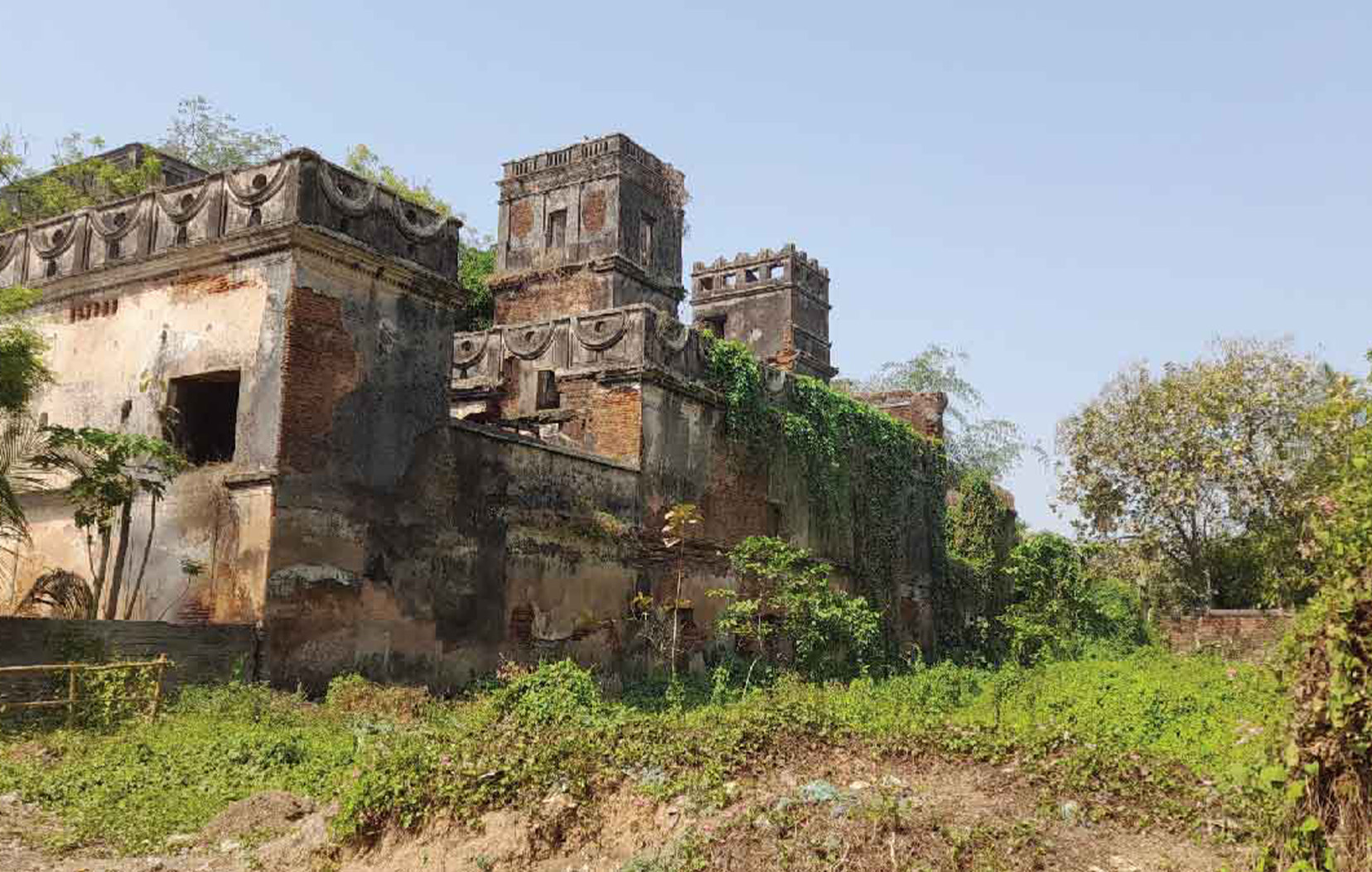
The Palace of Raipur, once a renowned residence of the illustrious Sinha (/Singha) Dynasty, is now deserted and dying in its own ruins. It serves as a reminder of fading times, lost tales, and the reality of time.
With three wings, 120 rooms, and more than 60 bighas of land, their imposing Palace, also known as Raipur Rajbari (Palace in Bengali) or The Lord Sinha Palace, served as a symbol of their riches and authority.
Members of this palace have a long and intriguing history with our nation. Shantiniketan's founding is one of them.
The Sinha family owned much of Birbhum and its surrounding regions. As Maharshi Debendranath Tagore sat in meditation under a Chatim tree, he experienced unmatched tranquillity and made the decision to purchase the area surrounding the miraculous tree. Locals claim that Maharshi paid the then-Zamindar of Raipur, Bhuban Mohan Singha (/Sinha), one rupee for this piece of land. After that, he started a guest home called Shantiniketan (abode of peace), giving rise to the now-famous university town of the same name that draws visitors and students from all over the world.
Satyendra Prasanna Sinha, a succeeding zamindar who was also born into the same palace and went by the names Lord Sinha or First Baron Sinha, made significant contributions to the nation's history throughout the colonial era.
Satyendra Prasanna Sinha, the first Indian to hold the position, was appointed as the Standing Counsel to the Government of India in 1903 and then twice as the Advocate General of Bengal. He studied law in England when he was just 17 years old. He then joins the Viceroy's Executive Council as the first Indian member.
He served as Edwin Montago's assistant and represented India in the special war conferences in 1917 and 1918 as well as the 1919 Paris Peace Conference, which was charged with negotiating the conditions of the conclusion of World War 1. He signed the Treaty of Versailles as one of its signatories.
Soon after, he got his peerage (a system of honour in Britain) and was referred to as Lord Sinha or the 1st Baron Sinha of Raipur. He then assumed the position of Under Secretary of State for India. The primary function of this peerage is to grant the individual access to a seat in the British House of Lords.
He served as Edwin Montago's assistant and represented India in the special war conferences in 1917 and 1918 as well as the 1919 Paris Peace Conference, which was charged with negotiating the conditions of the conclusion of World War 1. He signed the Treaty of Versailles as one of its signatories.
Lord Sinha achieved several firsts for an Indian in numerous contexts and produced a great deal more noteworthy achievements. He received several honours and plaudits for his service, and he was undoubtedly feted in his own era. The Raipur Rajbari, however, progressively became an unreachable place of living with each passing generation since he was too busy working at his Calcutta home.
As the zamindari system was abolished in 1951, the many Sinha family lines all relocated to different regions, making it nearly impossible to maintain this enormous palace. There are rumours that the Rajbari was abandoned in the 1970s.
It is reported that the final surviving Sinha family member removed all the teak beams supporting the floors and sold them. As a result, the floors began to progressively collapse, leaving the Castle in ruins. The truth may never be known; however, the locals frequently claim that once the Palace was abandoned, villagers or local crooks were in charge of selling the teak beams.
The Palace is now a wreck of legends that inspire imagination, a vision of mystery and terror. The villagers share legends about hidden passageways and underground labyrinths, as well as scary stories about powerful spirits.
The Rajbari, which has an unmistakable air of its own, has frequently been utilized for filming several movies, most notably the 1984 movie Khandar, which is hilariously suitable because it means "Ruins" and stars Shabana Azmi, Naseeruddin Shah, and Pankaj Kapoor. Also, this location was used to film the 2012 Bengali movie "Jekhane Bhooter Bhoy" (where it is "to dread spirits"). The film's spooky mood was greatly enhanced by the location.